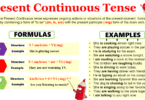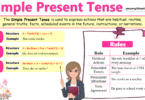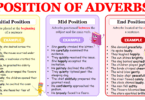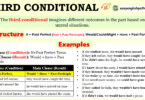Linking verbs are words in sentences that are used join the subject to a state. They don’t use to show action but instead they are used to connect subject to get more information about it. Understanding linking verbs is important because they help us describe things and express what something is like. For example, in the sentence ‘She is happy,’ the word –> is <– is a linking verb because it is connecting the subject
–> she<– to the word –> happy. <– Therefore, when we want to describe something or say what it’s look like, we use linking verbs. Let’s discuss more about linking verbs and see how they work together in sentences.
What is a linking verb?
A linking verb is a word that is used connect the subject of a sentence with a noun or adjective that renames or describes it. It doesn’t use to show action like other normal verbs that are particularly used to show actions for daily life. but instead it is used to link the subject to more information about it. For example, in the sentence The cake smells delicious. The word –> smells <– is the linking verb because it connects the subject –> Cake<– to the adjective –> delicious<– describing her state of being. So, when we use a linking verb, we’re showing a relationship between the subject and the words that follow it.
How to Use Linking Verbs?
Identify the Subject:
The subject can be the person, thing, or idea that the sentence is about. For example, in the sentence ‘The flowers smell sweet.
–> the flower<– is the subject.
Choose the Linking Verb:
Common linking verbs include –> BE <– which is the root of different verbs like (am, is, are, was, were, etc.), become, seem, appear, feel, look, taste, sound, and remain.
Connect the Subject to the Subject Complement:
The subject complement is the word or phrase that follows the linking verb and describes or renames the subject. For example, in the sentence ‘She is happy’ –> happy<– is the subject complement.
List of linking Verbs with Examples
| Linking Verb | Sentence |
|---|---|
| Be | She is happy. |
| Become | He became a doctor. |
| Seem | She seems tired. |
| Appear | The star appears bright. |
| Feel | He feels cold. |
| Look | You look tired. |
| Taste | The soup tastes salty. |
| Sound | The music sounds melodic. |
| Remain | She remains calm. |
| Stay | They stay focused. |
| Keep | He keeps busy. |
| Turn | The milk turned sour. |
| Grow | The plant grows tall. |
| Run | The saucepan runs dry. |
| Lie | The book lies open. |
| Stand | The statue stands tall. |
| Fall | The leaves fall gracefully. |
| Get | He got tired. |
| Smell | The flowers smell sweet. |
| Continue | The music continues playing. |
| Would Be | It would be easy for you to walk in these shoes. |
| Did | Why did you seem like this? |
| Act | He acted like a weird person. |
| Keep | You have to keep a secret. |
| Went | He went there for nothing. |
| Grew | The tree grew against the wall. |
| Was Being | He was being narcissistic. |
| Have Been | I have been here for a long time. |
| Been | It’s been two years since she has been behaving like this. |
| Must Be | You must be normal at that time. |
You May Also Like






